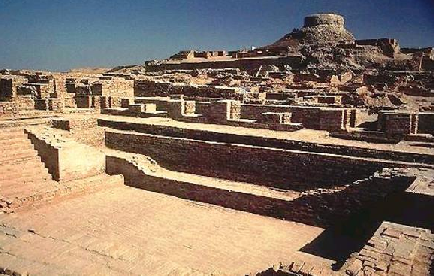UPSC Exam: Must Know Facts about Indus Valley Civilization.
Continuing with the series on the great Indus Valley Civilization, we bring you some interesting facts about it. This is important not only from a historic point of view, but also from the UPSC IAS exam viewpoint. These static facts can increase your understanding and appreciation of this ancient civilization and of course, aid you in your IAS prelims exam.
Fact# 16: No congestion on the streets
- The streets found in Mohenjo-Daro and Harappa were as wide as 10.5 m.
- The smaller roads were at least 1.5 m wide.
- Archaeologists believe that the wide streets point out to market activities along them.
Fact# 17: The streets in Harappa were paved
- Harappan streets were paved with burnt bricks to facilitate the easy movement of ox carts.
- The cities of the Indus Valley Civilization had channels running along the streets for the disposal of drainage water.
Fact# 18: There were distinct neighbourhoods in the cities
- The cities of the Indus Valley Civilization could be divided into distinct neighbourhoods.
- Each neighbourhood had inhabitants who were engaged in a particular profession.
Fact# 19: The city of Mohenjo-Daro was built at least 9 times
- Many of the cities of this civilization were destroyed several times by flood, deposition of silts, etc.
- Each time they were rebuilt.
- What is amazing is that every time they rebuilt the cities, they employed the same grid pattern.
- Mohenjo-Daro was constructed nine times and each time on top of the earlier grid.
- This shows the sophistication in their urban planning.
Fact# 20: Harappa had very advanced granaries
- The granaries in Harappa used advanced technology that was seen in Rome 2800 years later.
- The sites also had citadels, bathing platforms and burial grounds.

(The Great Bath at Mohenjo-Daro, Sindh, Pakistan)
Fact# 21: The Indus Valley Civilization used standard burnt bricks everywhere
- There were two types of bricks used in the Mature Harappa Period. One measured 7 X 14 X 28 cm and the other measured 10 X 20 X 40 cm in size.
- The bigger bricks were used to construct public buildings.
- The smaller bricks were used to build houses.
- Both types of bricks followed the 1:2:4 ratio.
Fact# 22: Ratio 1:2:4 all the way
- The ratio 1:2:4 was not limited to bricks, but to all aspects.
- This ratio was followed in the houses, public structures, neighbourhood regions and even the city.
- Historians do not know whether this standardization was owing to religious beliefs or just a convention followed by the builders.
Also Read | Indus Valley Civilization – Part 3 Indus Valley Civilization – Part 5
Stay tuned for more strategy articles on free IAS prep and for all latest news and updates on UPSC IAS Exam.
Comments